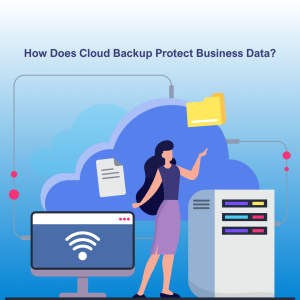Data is the lifeblood of any organization. However, data loss remains a significant risk – one study found that 93% of companies lose critical data at least once per year. The causes can range from human error to software bugs to catastrophic events. To protect against data loss, it’s essential to implement robust data backup procedures, especially as organizations shift data storage to the cloud.
Cloud backups provide protection by storing data off-site. Should disaster strike your main facilities, your data remains safe in the cloud. However, not all cloud backups are created equal. You need to follow best practices to ensure your backups are there when you need them. Here are five key best practices to follow:
1. Back Up Frequently to Capture Data Changes
The frequency of your backups impacts how much data you can lose in a worst-case scenario. Most experts recommend daily backup cycles to protect against frequent minor data corruption or deletion. For example, an accidental administrative error could delete critical data files – if that data was backed up prior to the deletion, you could quickly restore it from yesterday’s backup with minimal data loss.
In addition to daily incremental backups, you should run full weekly backups to guard against more catastrophic failures. This way, even if your daily backups become corrupted for some reason, you can restore the complete data set from your most recent weekly backup. Combine frequent backups with data archives for long-term retention if needed.
When determining backup frequency, balance the business need to minimize data loss with the storage and bandwidth costs of more frequent backups. You want to err on the side of caution to protect your data assets.
2. Encrypt Data to Provide Security
Data security is a top concern when moving backups to the cloud. You don’t want unauthorized access to sensitive business, customer, financial, or proprietary data that may be contained in your backups. To keep data secure, enable encryption for both data in transit and data at rest in the cloud.
For data in transit, enable Secure Sockets Layer (SSL) encryption, such as TLS, when transferring data over networks. Encrypt data at rest in the cloud with AES-256 or similar advanced encryption standards. Strictly control access to encryption keys and rotate keys periodically.
Following encryption best practices prevents hackers from reading your backup data even if they gain access to the storage systems. Make sure encryption levels comply with any regulatory or compliance requirements for your industry.
3. Implement Access Controls and Monitoring
In addition to encryption, you need backup access controls to prevent unauthorized access or changes. One best practice is to implement Role-Based Access Controls (RBAC), which grant access only to specific backup administrator roles. Use multi-factor authentication (MFA) for an additional layer of protection when users access backups.
Closely monitor access logs to detect anomalies and failed attempts. You should also have documented approval processes for restoring or deleting backup data. These controls prevent both external and internal threats.
Regularly check user roles and permissions to ensure individuals only have access appropriate to their job duties. If an employee leaves the company, immediately revoke their backup access. Follow access control best practices to ensure only authorized individuals can reach your backups.
4. Test Recovery Processes and Procedures
The worst time to test your backup recovery processes is right when you desperately need to restore data. You should regularly schedule and test restores from backups to validate that your procedures work as expected. Periodic recovery testing gives you confidence that data is retrievable when the need arises.
Document detailed step-by-step recovery instructions that are stored separately from your backups. Include all information needed to smoothly restore data, such as backup tool procedures, storage locations, recovery credentials, and contacts. Review and update regularly.
Testing also helps identify how long restores take for different data sets and storage tiers. Verify that your recovery speed meets your business requirements – a days-long restore may not be viable for critical systems. Use test results to adjust backup strategies if needed.
5. Monitor Storage Usage and Retention Periods
Lack of monitoring is one of the top causes of backup failures. Set up monitoring and alerts so you know immediately if a backup fails to run. Monitoring also provides visibility into storage usage trends so you can add storage resources as needed.
Log backup-related events such as deletions, modifications, and restores for auditing. Detailed logs enable analyzing issues and improve troubleshooting. They also provide visibility into who is accessing backups and if retention periods are being followed.
Speaking of retention, set backup retention policies aligned to business needs and regulatory requirements. Balance the cost of long-term storage with the need for historical backups. Archive and move older backups to cold storage as necessary.
Key Takeaways for Cloud Data Backup Best Practices
Backup and recovery may seem like dry, boring topics – until data is on the line. It’s crucial to follow best practices with your cloud data backups. To recap, these include:
- Frequent and redundant backups to limit potential data loss
- Encryption and access controls for security
- Recovery testing to validate restores work when needed
- Monitoring and logs for visibility into the health and usage of backups
- Retention policies tailored to business needs and compliance
Backup systems require ongoing vigilance, maintenance, and care. Neglecting backups leads to painful data loss lessons. However, investing in backup best practices pays off by letting you recover quickly from data corruption, malicious attacks, human mistakes, and disaster scenarios. Protect your data by following these cloud backup best practices.





Pingback: 10 Common Data Disasters for Your Business Data
Pingback: Cloud Backup vs. Disaster Recovery Data Protection Strategies » Kaluari Blog